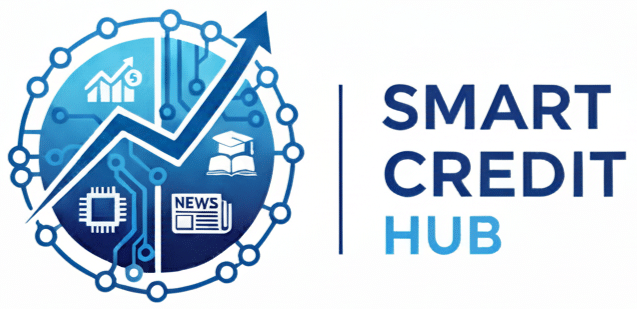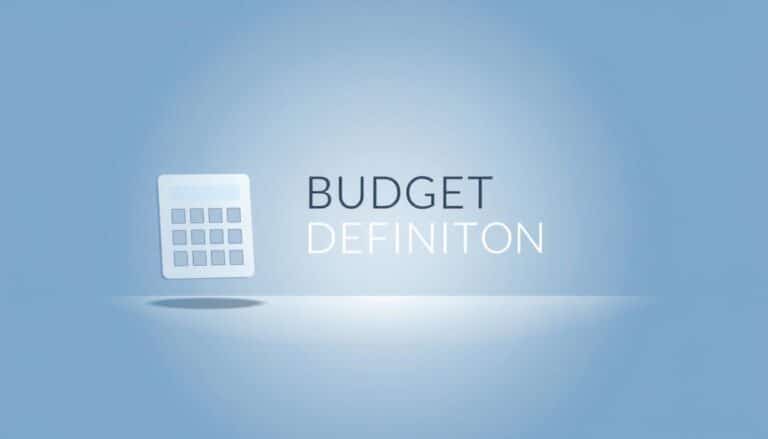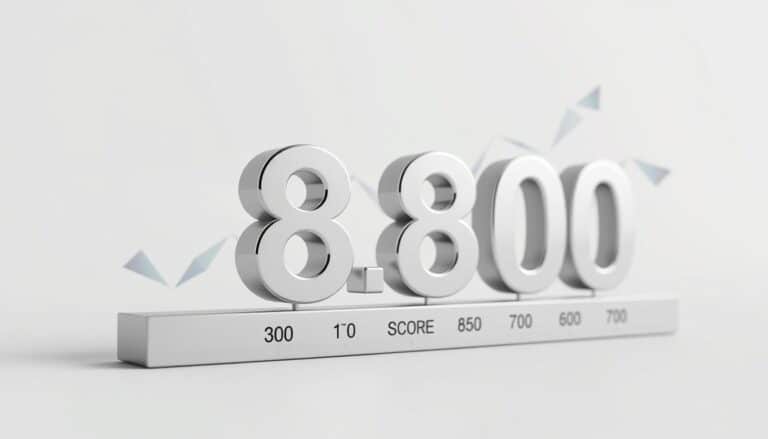Managing your money well means knowing your banking options. Choosing between a checking and a savings account can be tricky.
For daily spending and saving for later, it’s key to know the difference between checking and savings accounts. A checking account is for everyday money use. A savings account is for keeping money for the future.
Related content:
You will stay on the same website.
Knowing the difference helps you manage your money better. This article will help you understand the basics and pick the right account for you.
Key Takeaways
- Understand the primary purpose of checking and savings accounts.
- Learn how to choose the right account based on your financial needs.
- Discover the benefits of maintaining both types of accounts.
- Gain insights into managing your finances effectively.
- Explore tips for maximizing your savings.
What is a Checking Account?
Opening a checking account is a big step in managing your money. It’s a key tool for daily money needs, making it easy to access your cash.
Definition and Purpose
A checking account is for everyday money use. You can put money in, take it out, and pay bills with it. It’s all about handling your daily money needs.
Checking accounts are flexible and easy to use. They help you manage your everyday spending well.
Typical Features
Checking accounts have many useful features. Some include:
- Debit cards for buying things and getting cash
- Checks for paying bills or making payments
- Online and mobile banking apps for easy account management
- Direct deposit for getting paychecks or government benefits
These features make checking accounts great for daily money management.
Common Fees
Checking accounts have fees, but knowing them helps manage money better. Common fees are:
| Fee Type | Description | Average Cost |
|---|---|---|
| Monthly Maintenance Fee | Charged for account maintenance | $5-$15 |
| Overdraft Fee | Charged when transactions exceed the account balance | $25-$35 |
| ATM Fee | Charged for using out-of-network ATMs | $2-$5 |
Knowing these fees helps avoid extra charges and manage your account better.
What is a Savings Account?
A savings account helps you save money over time. It’s a key financial tool that lets you earn interest on your savings.
Definition and Purpose
A savings account is a special account that earns interest. It’s meant for saving money, not for daily spending. It’s a safe place to keep money for the future or big goals.
Key features of savings accounts include:
- Earning interest on deposited funds
- Low risk due to bank insurance
- Liquidity, allowing access to funds when needed
Interest Rates Explained
Interest rates on savings accounts change based on the bank and the market. The rate affects how much interest you get on your money over time.
For example, a 2% interest rate on $1,000 means you earn $20 in a year. Your total balance would be $1,020.
Factors influencing savings account interest rates include:
- Economic conditions and monetary policies
- Competition among banks
- Regulatory requirements
Withdrawal Limitations
Savings accounts often have rules to help you save more. These rules might limit how many times you can take money out each month. Or, they might charge you if you take money out too early.
For example, some accounts only let you make six transactions a month. Going over this limit could lead to fees or change your account type.
The advantages of savings accounts include:
- Earning interest on savings
- Low risk
- Flexibility in accessing funds when needed
Key Differences Between Checking and Savings Accounts
Checking and savings accounts have different uses. Knowing these differences helps you manage your money better.
Access to Funds
Checking accounts let you use your money often. They’re good for daily needs, bills, and debit card use. Savings accounts, though, are for keeping money safe for later, with less access.
Checking accounts offer debit cards and checks for easy access. Savings accounts might limit withdrawals and don’t usually have debit cards or checks.
Transaction Limitations
Checking accounts don’t limit how many times you can use them. This lets you handle your daily money needs freely. Savings accounts, though, have rules. You can only make six certain types of withdrawals or transfers a month.
Going over these limits can lead to fees or your account being changed to a checking one. This rule helps you save more and spend less.
Interest Earnings
Checking accounts usually don’t earn much interest because they’re for spending. Savings accounts, though, aim to grow your money over time with interest.
| Account Type | Interest Rate | Transaction Limits |
|---|---|---|
| Checking Account | Low or No Interest | No Limits |
| Savings Account | Higher Interest | Limited to 6 Transactions/Month |
In summary, checking and savings accounts are for different things. Understanding their difference helps you meet your financial needs and goals.
When to Use a Checking Account
Checking accounts help with everyday money needs. They make managing money easier, from daily costs to bill payments.
Daily Expenses
Checking accounts are great for daily spending. You can use debit cards, checks, or online to access your money. This makes it easy for everyday purchases.
For example, debit cards linked to your account let you buy things without cash or credit card debt worries.
Bill Payments
They’re also good for paying bills. Many places let you pay bills from your account online or by automatic bank drafts. This makes it easy to handle bills like utilities, rent, or mortgages.
Using a checking account for bills helps you keep track of spending. It also ensures you pay on time, avoiding late fees or service cuts.
Overdraft Protection
Another key benefit is overdraft protection. It acts as a safety net for unexpected costs or overspending. It links to savings, credit cards, or lines of credit to cover shortfalls.
| Feature | Description | Benefit |
|---|---|---|
| Debit Card | Directly linked to checking account | Easy access to funds for daily expenses |
| Online Bill Pay | Pay bills directly from checking account | Simplifies bill payments and reduces late fees |
| Overdraft Protection | Linked to savings, credit card, or line of credit | Prevents overdraft fees and service interruptions |
In summary, checking accounts are essential for everyday money needs. They help with daily spending, bill payments, and overdraft protection. Knowing how to use them well can improve your financial management and stability.
When to Use a Savings Account
Savings accounts are a safe way to handle your money. They’re great for emergency funds, long-term savings, and earning more interest. They keep your money separate from your daily spending money.
Emergency Funds
A savings account is perfect for building an emergency fund. This fund helps cover unexpected costs like car repairs or medical bills. It prevents you from going into debt when emergencies happen.
It’s wise to save enough for 3-6 months of living expenses. This way, you’re always prepared for the unexpected.
Long-term Goals
Savings accounts are also good for long-term goals. You can save for a house, education, or retirement without using your daily money. Some accounts are made for long-term goals, offering better interest rates or benefits.
Higher Interest Savings
Some savings accounts have higher interest rates than regular checking accounts. High-yield savings accounts offer even higher rates, but they might need you to keep a certain balance.
When looking for a savings account for more interest, compare rates and terms from different banks. Choose accounts with good rates and few fees to grow your savings.
Pros and Cons of Checking Accounts
Checking accounts help manage daily money, but they have good and bad sides. Knowing these points is key to smart money choices.
Advantages
Checking accounts have many benefits. They are crucial for managing money well. Here are some main advantages:
- Ease of access to funds through debit cards, checks, and online banking
- Convenience in managing daily expenses and bill payments
- Ability to set up direct deposit for paychecks and other regular income
- Overdraft protection, which can help prevent accidental overspending
Financial expert Jean Chatzky says, “A checking account is not just a place to park your money; it’s a tool that can help you manage your day-to-day finances effectively.”
“Having a checking account can simplify your financial life by consolidating your spending into one place.”
| Feature | Benefit |
|---|---|
| Debit Card | Easy access to funds for purchases and ATM withdrawals |
| Online Banking | Convenient management of account activities and balance checks |
| Bill Pay | Automated payments for regular bills |
Disadvantages
Checking accounts also have some downsides. These include:
- Potential for monthly maintenance fees if minimum balance requirements are not met
- Limited or no interest earnings on account balances
- Risk of overdraft fees if transactions exceed the available balance
It’s important to know these downsides to get the most from your checking account. Financial advisors say, “Understanding the terms and conditions of your checking account can help you avoid unnecessary fees.”

Pros and Cons of Savings Accounts
When you think about saving money, knowing the good and bad of savings accounts is key. These accounts are made to help you save money and earn interest on it.
Benefits
Savings accounts have many perks. They offer higher interest rates than checking accounts, helping your money grow. They also help you save by keeping your money separate from your daily spending.
- Earn interest on your deposits, with rates varying by institution and account type.
- Typically, savings accounts are insured by the FDIC or NCUA, protecting your deposits up to the maximum limit.
- They provide a safe place to save for specific goals or emergencies.
Drawbacks
But, savings accounts also have some downsides. One big issue is the restriction on transactions. Federal rules often limit withdrawals or transfers from savings accounts to six per month.
- You may face penalties or fees for exceeding the allowed number of transactions.
- Some savings accounts come with minimum balance requirements to avoid maintenance fees.
- Inflation can erode the purchasing power of your savings over time if the interest rate is not competitive.
Knowing these pros and cons can help you use your savings account wisely. This way, you can reach your financial goals.
How to Choose Between Checking and Savings Accounts
Choosing between a checking and savings account depends on your financial needs and how you handle money. It’s key to know what you need and how you manage your finances.
Assessing Financial Needs
First, think about your income, expenses, and savings goals. Ask yourself:
- What are my monthly expenses, and how do I typically pay them?
- Do I need easy access to my money for daily transactions?
- Are there specific savings goals I’m working towards, like a emergency fund or a down payment on a house?
Knowing your financial situation helps decide between a checking account for daily use or a savings account for earning interest.
Considering Transaction Habits
Your habits with money also matter in choosing an account. Think about:
- Frequency of Transactions: If you make many transactions, a checking account is better for its flexibility and lower fees.
- Transaction Types: For debit card use, checks, or online payments, a checking account is likely best.
- Savings Goals: For long-term savings, a savings account is better because it earns interest.
By looking at your transaction habits, you can pick the right account for your financial activities and goals.
In conclusion, understanding your financial needs and habits is key to choosing between a checking and savings account. By considering these, you can pick the account that supports your financial health and goals.
Combining Checking and Savings Accounts
Having both checking and savings accounts can make managing money easier. They help you handle everyday costs and save for the future.
Benefits of Having Both
Using both accounts brings many advantages. Checking accounts are great for daily spending. Savings accounts earn interest and grow your savings over time.
- Easier Budgeting: Keeping expenses and savings separate makes budgeting simpler.
- Higher Interest Earnings: Savings accounts can earn interest, growing your savings.
- Financial Discipline: A savings account promotes saving habits.
Financial experts say having both accounts helps manage money better. A banking expert notes, “Having both accounts helps keep spending and saving separate.”
“The key to financial stability is not just about earning more, but also about managing what you have effectively.”
How to Manage Both Accounts
Managing both accounts needs a plan. Here are some tips to use both effectively:
- Set up automatic transfers from checking to savings to save regularly.
- Use checking for daily needs and bills.
- Keep an eye on your accounts to avoid overdrafts and maximize interest.
| Account Type | Primary Use | Key Features |
|---|---|---|
| Checking Account | Daily Expenses, Bill Payments | Easy access, Overdraft protection |
| Savings Account | Long-term Savings, Emergency Funds | Interest earnings, Withdrawal limitations |
Understanding the benefits and managing both accounts well leads to a more stable financial life.
Overview of Account Fees and Charges
Fees on checking and savings accounts can really impact your savings. It’s key to know these fees to pick the right accounts for you.
Choosing a checking or savings account isn’t just about rates or benefits. You also need to understand the costs. Both accounts have fees that can reduce your money if not watched.
Checking Account Fees
Checking accounts have fees like monthly fees, overdraft fees, and ATM fees. Knowing these can help you pick an account that saves you money. Look for accounts with no fees or ones that refund ATM fees.
Some accounts let you use ATMs for free, while others charge. Knowing this can help you avoid extra costs.
Savings Account Fees
Savings accounts usually have fewer fees than checking accounts. But, they can still have fees for things like withdrawals and transfers. It’s important to know the interest rates, as higher rates might mean higher fees.
Always check the terms of a savings account to avoid fees. Keeping a minimum balance can often waive monthly fees. This way, you can save more without extra charges.
Impact on Financial Planning
Knowing how checking and savings accounts affect financial planning is key. It helps people make smart money choices. Good financial planning means handling daily costs, saving for later, and making smart money moves.
Using Accounts for Budgeting
Checking accounts are great for everyday money needs. They make it easy to pay bills and handle daily costs. Budgeting apps work well with checking accounts to show how money is spent.
Having a budget is important. It divides money into different uses, with some for savings. Using a checking account for direct deposits and bills makes tracking easier. This helps find ways to save more money.
Saving for Goals
Savings accounts are for long-term savings. They’re perfect for building an emergency fund or saving for big things like a house or a trip. High-yield savings accounts can even earn interest, making savings grow faster.
| Account Type | Purpose | Benefits |
|---|---|---|
| Checking Account | Daily transactions, bill payments | Easy access to funds, budgeting tools |
| Savings Account | Saving for emergencies or goals | Earns interest, helps achieve long-term goals |
Using both checking and savings accounts wisely is key to a good financial plan. It’s about putting money in the right places and using each account’s strengths.
In short, knowing the roles of checking and savings accounts is vital for smart financial planning. By using them smartly, people can manage their money better, reach savings goals, and secure their financial future.
Understanding Account Security
Keeping your money safe starts with knowing how checking and savings accounts are protected. In the United States, banks use a mix of government rules and your own actions to keep your money safe.
The Federal Deposit Insurance Corporation (FDIC) insures your deposits up to $250,000. This means if your bank goes bankrupt, the FDIC will pay you back, usually in a few days.
Bank Insurance and Protection
Bank insurance and protection are key to keeping your money safe. The FDIC covers many types of accounts, like:
- Checking accounts
- Savings accounts
- Money market deposit accounts
- Certificates of deposit (CDs)
It’s important to know what’s covered and what’s not. For example, stocks, bonds, and mutual funds aren’t insured by the FDIC. Nor are digital assets like cryptocurrencies.
| Account Type | FDIC Insurance Coverage |
|---|---|
| Checking Accounts | Up to $250,000 |
| Savings Accounts | Up to $250,000 |
| Money Market Deposit Accounts | Up to $250,000 |
| Certificates of Deposit (CDs) | Up to $250,000 |
Responsibility of Account Holders
While banks and the FDIC do a lot to protect your money, you also play a big part. Here’s what you can do:
- Keep an eye on your account activity
- Tell your bank about any strange transactions
- Use strong, unique passwords for online banking
- Stay away from phishing scams and other cyber threats
By being careful and taking action, you can greatly lower the chance of someone getting into your account without permission.
In short, knowing about account security means understanding both the protection offered by the FDIC and what you can do to help. By doing both, you can enjoy the benefits of checking accounts and the advantages of savings accounts safely.
Conclusion: Making the Right Choice
Choosing between a checking and savings account is key. Each has its own purpose. Knowing the differences helps you decide.
Key Considerations
Think about your financial needs and how you spend money. A checking account is great for everyday expenses and bills. On the other hand, a savings account is better for saving for emergencies or long-term goals. It usually has higher interest rates.
Final Account Selection
Deciding on a checking, savings, or both accounts depends on your financial goals. Weighing the pros and cons of each helps you choose wisely. Remember, having both accounts can help you manage your money better.



